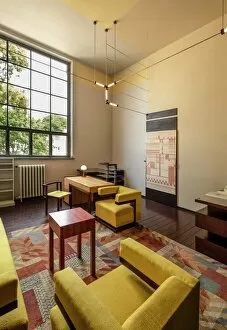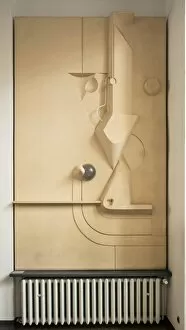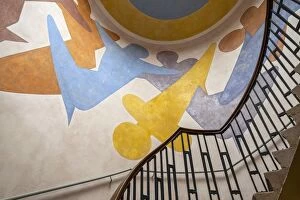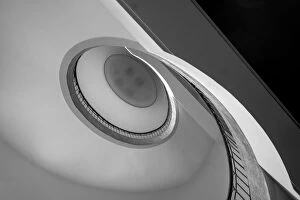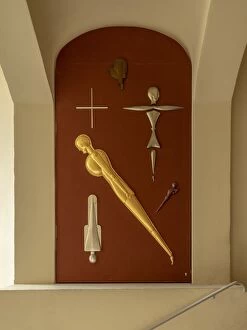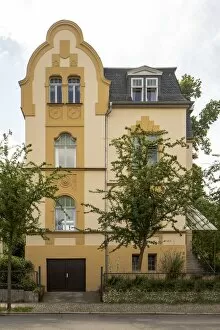Henri Van Der Velde Collection
Henri van der Velde, a renowned Belgian architect and designer, left an indelible mark on the world of art and architecture
For sale as Licensed Images
Choose your image, Select your licence and Download the media
Henri van der Velde, a renowned Belgian architect and designer, left an indelible mark on the world of art and architecture. His work can be seen in various iconic buildings and structures across Germany. In 1924, Van der Velde worked in Walter Gropius' office, contributing to the design of the main building of Bauhaus-University Weimar. This architectural masterpiece, constructed between 1904 and 1911, stands as a testament to Van der Velde's innovative vision. The influence of his contemporaries is evident throughout the university. Joost Schmidt's relief from 1923 adorns the walls while Oskar Schlemmer's murals captivate visitors with their artistic brilliance. One cannot miss the Jugendstil staircase that graces the main building. Its intricate design showcases Van der Velde's attention to detail and commitment to blending aesthetics with functionality. Outside of Bauhaus-University Weimar, Henri van der Velde's genius can be witnessed at Nietzsche Archive on Humboldstrasse 36. The archive serves as a tribute to Friedrich Nietzsche and features artwork by Alan John Ainsworth that beautifully complements Van der Velde's architectural style. Haus Hennenberg on Gutenberg Strasse 1a also bears testimony to Van der Velde's talent. Built between 1913-14, this structure exhibits his ability to create harmonious spaces that seamlessly integrate into their surroundings. Cranachstrasse 17 boasts a Jugendstil villa designed by Van der Velde himself in 1905. With its distinctive charm and elegant lines, it exemplifies his mastery over Art Nouveau aesthetics. Another notable creation is Haus Hohe Pappeln on Belvederer Allee 58. Constructed during 1907-1908, this house showcases Van de Velde’s skillful fusion of form and function while maintaining an air of sophistication. Beyond architecture, Van der Velde's talent extended to furniture design.

